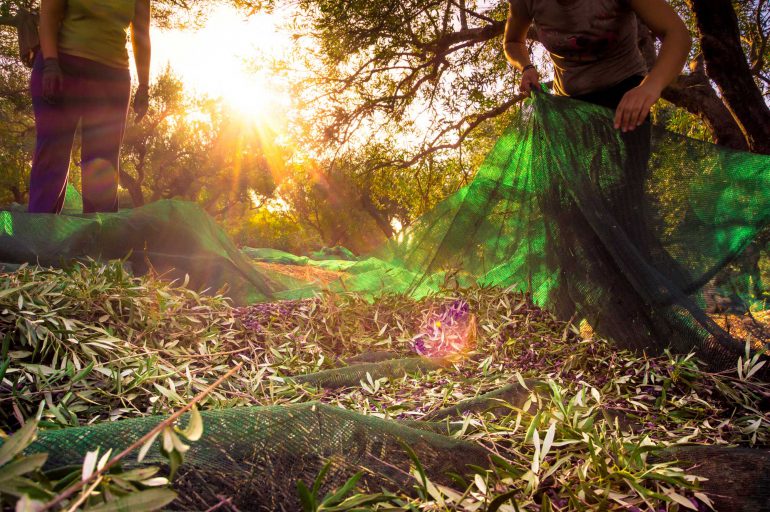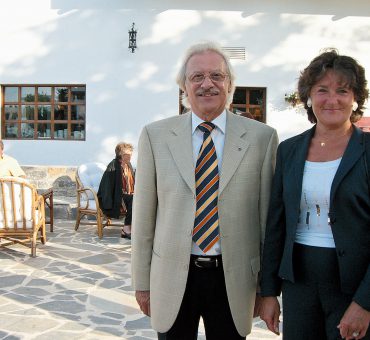Starting early November until the last days of January, Cretans begin the backbreaking olive harvesting process, which brings together entire families and communities in a rural activity that involves both labor and fun.
The olive harvest is not typically a touristic attraction, although, with the rise of experiential travel, companies include this activity with “like a local” tours and events
Olive oil is the primary source of agricultural income on our Minoan cradle. Necessity pushes farmers to use modern machinery to harvest the olives: portable mechanical harvesters, and cars for transportation.
Crete is now mostly modern. No more hitting the olive tree branches relentlessly with sticks to make the stubborn little fruits fall onto the nets set neatly on the ground to collect them. Now, farmers use mechanical harvesters that buzz deafeningly and speed up the process. Then the crops are loaded in trucks and rushed to production facilities where machines sort the olives. However, in many rural communities, they still select the olives on site, separating them from leaves and twigs with a screen of sorts. Men shake this vigorously until the fruit falls into the sack. Other times, women and children take over to sort the most stubborn fruit – many hands and vivacious chatter make this type of work less tedious than it first seems.
During the harvest, the workers will usually take a snack break and picnic under the trees. The food served is typical Cretan, served mezze style, for partakers to enjoy a diversity of bites, like fava, dolmades, feta cheese, all kinds of grilled or roasted meats, sausages, vegetables, and cured olives, of course. The day usually ends back in the village, with all participants gathered around a table, eating traditional Cretan home-cooked meals – again, served mezze-style.
Noteworthy, the oldest olive trees in Europe are on Crete. Vouves argues that it is home to the oldest olive tree in the world, however, the olive trees of Bechealeh in Lebanon . Regardless, the 3000-year old Monumental Olive Tree of Vouves is an impressive sight, and it’s one of 14 such trees scattered around the island and give proof that Crete was the first in Europe to produce olive oil. The claim is supported by archeological finds at Knossos and Phaistos too.
One of the most spectacular discoveries that attest the history of olive oil on the island are the discoveries at the archeological site in Zakros on the eastern coast: well-preserved olives were found at the bottom of a cup sunk in a water cistern at Palace of Zakro. Experts suggest that these olives were offered to a deity. Olive oil presses were unearthed here as well.
At the archeological site of Vathypetro, researchers discovered the oldest olive oil press in Europe, as well as a large number of pithoi.
At Creta Maris Resort our purpose is to preserve tradition and educate our guests what olive harvesting was – and still is – all about: Cretan values. When you join us to harvest olives, we’ll skip the comfort of modern technology as we transport olives with donkeys to the place where the edible ones are sorted and cured. This is the ancient way of harvesting. So, if you want to learn more about the Cretan olive harvest traditions and olive oil history, join Creta Maris Resort for the ancient liomazema in the fall – it is one of the most interesting activities for island visitors this time of the year.



